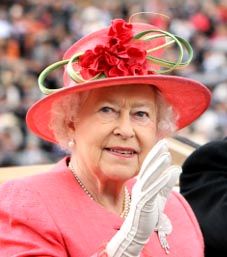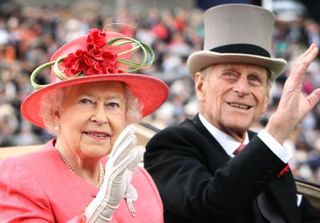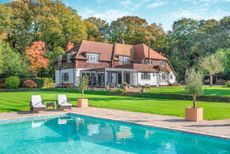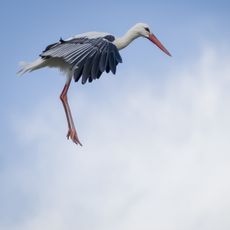The Queen's annual engagements
The Queen has annual engagements she has now attended many times in her role. We sum up her regular calendar of engagements.


February 6: Accession Day
The day marks the anniversary of The Queen's accession to the throne in 1952, and is often the date her official duties begin, signalling her return from Sandringham to London
March: Commonwealth Day
On the second Monday of March, The Queen attends a service at Westminster Abbey to celebrate the Commonwealth
Easter: Easter Court
For the month around Easter, The Queen lives at Windsor Castle, known as Easter Court. Over this time, distinguished visitors are invited for dinner and to stay the night-events referred to as ‘dine and sleep'. On Easter Sunday, The Queen and members of the Royal Family attend Matins at St George's Chapel in the Lower Ward of Windsor Castle
April 21: Birthday
Sign up for the Country Life Newsletter
Exquisite houses, the beauty of Nature, and how to get the most from your life, straight to your inbox.
The Queen's actual birthday, which is not officially celebrated until summer. The practice of separating the monarch's actual and official birthdays was begun by Edward VII, whose birthday was November 9 and often marred by bad weather. Her Majesty's birthday cards are all acknowledged by her ladies-in-waiting
May: The Royal Windsor Horse Show
Since 1943, this five-day equestrian celebration event has been held at Windsor Castle in May. In the past, various members of the Royal Family have taken part, including The Duke of Edinburgh in the carriage-driving events
June: Trooping the Colour
The Queen's official birthday is marked by a ceremony at Horse Guards Parade in London. The origins of the parade derive from the practice of carrying regimental flags or colours so that soldiers could be recognised in battle. The occasion was first associated with the Sovereign's birthday in 1748, in the reign of George II. Her Majesty first appeared at the ceremony in 1947, and, in 1951, took the salute for the first time. Trooping the Colour also proclaims The Queen's role as head of the armed forces

June: Garter Day
On the Monday of Royal Ascot week, The Queen leads the celebration of Garter Day at Windsor and inducts any new appointments to the order. The Most Noble Order of the Garter, founded in 1348 by Edward III, is the oldest and most senior order of chivalry in England and the personal gift of The Queen. In addition to Her Majesty and The Prince of Wales, there are only ever 24 companion members at once
June/July: Garden parties
During the summer, The Queen hosts up to three garden parties on the lawns of Buckingham Palace. The 8,000 visitors, invited in acknowledgement of a contribution to national life, drink 27,000 cups of tea and eat 20,000 sandwiches and 20,000 slices of cake June: Royal Ascot
Every summer since 1945, The Queen has attended Royal Ascot. The royal association goes back 300 years to 1711, when Queen Anne ordered the racecourse to be laid out on royal land it is still part of Windsor Great Park. The royal racing colours-purple body with gold braid, scarlet sleeves and a black velvet cap with gold fringe-were first used by the Prince Regent, later George IV, in the 1810s
June/July: Holyrood Week
During the last week of June or the first week of July, The Queen takes up residence at the Palace of Holyroodhouse-her official residence in Edinburgh. In the Ceremony of the Keys, the Lord Provost of Edinburgh hands Her Majesty the keys to the city and greets her with the words ‘Welcome to your ancient and hereditary kingdom of Scotland'. During Holyrood Week, Her Majesty performs her Scottish engagements and holds a garden party in the grounds of the palace. The Thistle service at St Giles's Cathedral takes place during this week and marks The Order of the Thistle, instituted in 1687 by James VII of Scotland (James II of England). The highest order of chivalry in Scotland, it is the gift of The Queen
July: Balmoral
At the end of July, The Queen goes to Scotland once more, this time to her private residence at Balmoral Castle. The 49,000-acre estate was acquired for Queen Victoria in 1848, and employs about 50 people. Her Majesty sees all of her employees over the two months she is in residence, and hosts two Ghillies' Balls, held for staff, members of the local community and soldiers from the Royal Guard stationed at Ballater
November: Remembrance Sunday
The Queen leads the national acts of remembrance for fallen soldiers by attending the Festival of Remembrance the evening before and a service at Westminster Abbey, followed by the laying of a wreath at the Cenotaph. The Queen's wreath is made by the Royal British Legion and is decorated with her own ribbon. It reads: ‘In Memory of the Glorious Dead, Elizabeth R and Philip.' Her Majesty first appeared at the Cenotaph in 1946, at the first ceremony to be held after the end of the Second World War November: Diplomatic Reception
The highlight of the diplomatic social calendar, held at Buckingham Palace, for more than 1,500 guests, including members of the Royal Family. When high commissioners and ambassadors visit the UK, they present their credentials to The Queen, and are accredited to her Court of St James, rather than to the Government
November/December: State Opening of Parliament
In the last week of November or the first week of December, The Queen officially opens the new session of Parliament (or, if a general election has been held, at any time of the year). This is one of the few events where she wears full ceremonial dress and is the only time when the Executive, Legislature and Crown are together in the same place. The Queen has opened Parliament in every year of her reign, except 1959 and 1963, when she was expecting her two youngest children. Before the ceremony, The Queen's Ceremonial Bodyguard-the Yeoman of the Guard at the Palace of Westminster-search the cellars of the Houses of Parliament, a tradition instituted following the Gunpowder Plot in 1605
November: Royal Film Performance
The Queen attends a film viewing and hosts representatives of the entertainment industry, in aid of the Cinema and Television Benevolent Fund
December: Royal Variety Performance
The Queen or The Prince of Wales goes to this event. It dates from 1912, when George V attended to raise money for the Entertainment Artistes' Benevolent Fund December: The Christmas Broadcast
In early December, The Queen records an address to the nation, which airs at 3pm on Christmas Day. This tradition dates back to 1932, when George V gave the first radio broadcast. The Royal Family also sits down together to listen to it December: Sandringham
For Christmas, The Queen travels (usually by train) to Sandringham, where she celebrates Christmas with her family. Presents are exchanged on Christmas Eve, and, on Christmas Day, the Royal Family attends Matins at the church of St Mary Magdalene. A Boxing Day shoot is usually led by The Duke of Edinburgh, although he was forced to miss it in 2011 due to ill health ‘The Queen's Year: Souvenir Album' (Royal Collection Publications, £9.99)
to Country Life and save £1 per week
Country Life is unlike any other magazine: the only glossy weekly on the newsstand and the only magazine that has been guest-edited by HRH The King not once, but twice. It is a celebration of modern rural life and all its diverse joys and pleasures — that was first published in Queen Victoria's Diamond Jubilee year. Our eclectic mixture of witty and informative content — from the most up-to-date property news and commentary and a coveted glimpse inside some of the UK's best houses and gardens, to gardening, the arts and interior design, written by experts in their field — still cannot be found in print or online, anywhere else.
-
 A well-connected rural playground with 23 acres on the edge of the South Downs National Park
A well-connected rural playground with 23 acres on the edge of the South Downs National ParkOld House Farm is an impressive family home with a wealth of amenities that would inspire any rural passion.
By Arabella Youens Published
-
 The UK gets its first ‘European stork village’ — and it's in West Sussex
The UK gets its first ‘European stork village’ — and it's in West SussexAlthough the mortality rate among white storks can be up to 90%, the future looks rosy for breeding pairs in southern England.
By Rosie Paterson Published
